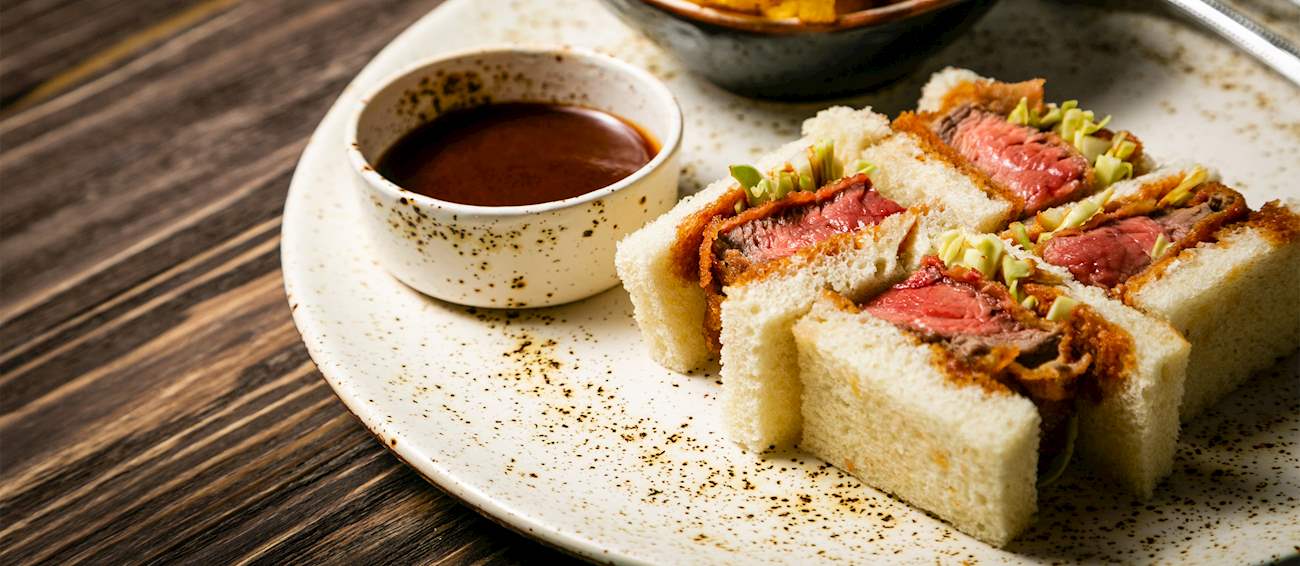As the name states, yakisoba pan is an unusual Japanese combination of stir-fried yakisoba noodles and plain bread rolls. The noodles are first blended with various vegetables and doused in a thick sauce, and the combination is then stuffed inside the roll.
The concoction is finished with mayonnaise, pickled ginger, and strips of dry seaweed. Yakisoba pan is available in many grocery stores and supermarkets throughout Japan and is usually enjoyed as a nutritious snack or a quick breakfast.
MAIN INGREDIENTS
Wagyu cutlet sandwich is a Japanese specialty sandwich that features a thick, tender, and juicy slice of crispy-fried, breaded wagyu beef steak. Called wagyu katsu sando in Japan, this steak sandwich may use a selection of cuts of the richly-marbled and flavor-packed wagyu beef such as zabuton (a shoulder cut), wagyu fillet, or the highly-prized and expensive kobe beef chateaubriand (a rare portion of the tenderloin).
Placed atop a crustless slice of white bread (sometimes Hokkaido milk bread or even honey-milk bread) that has been buttered, lightly toasted, and smeared with a sauce of choice, the panko-crusted beef cutlet is topped with second slice of toasted bread, and it is typically enjoyed with a glass of good Japanese craft beer on the side.
Tamago sando is a Japanese egg salad sandwich. In Japanese, tamago means egg, while sando means sandwich. Found in almost every convenience store, but also prepared at home in Japan, the sandwich consists of two slices of soft and pilowy crustless white bread stuffed with a combination of Japanese mayonnaise and scrambled eggs, mashed hard-boiled eggs, or both.
Tamago sando is typically seasoned with salt and sugar, and the bread is sometimes buttered so that it doesn't become soggy. It's recommended to pair the sandwich with a cup of coffee or tea on the side.
TasteAtlas food rankings are based on the ratings of the TasteAtlas audience, with a series of mechanisms that recognize real users and that ignore bot, nationalist or local patriotic ratings, and give additional value to the ratings of users that the system recognizes as knowledgeable. TasteAtlas Rankings should not be seen as the final global conclusion about food. Their purpose is to promote excellent local foods, instill pride in traditional dishes, and arouse curiosity about dishes you haven’t tried.



